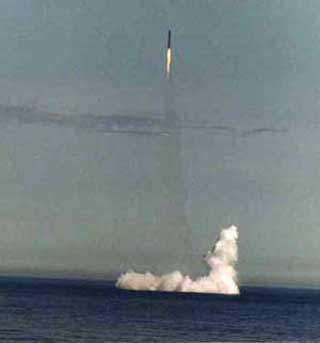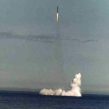
THE FINANCIAL CRISIS MAY CURTAIL KREMLIN PLANS FOR MODERNIZING ARMED FORCES
Publication: Eurasia Daily Monitor Volume: 5 Issue: 194
By:

On September 15 President Dmitry Medvedev announced ambitious plans to rearm and modernize Russia’s armed forces. Medvedev announced that by 2020 Russia had to guarantee continued nuclear deterrence as well as precision attack capability on land and sea (See EDM, October 3).
Indeed, by 2020 the Soviet nuclear strategic potential inherited in 1991 will be mostly spent. All Soviet-made, silo-based, heavy SS-18 intercontinental ballistic missiles and land-based mobile SS-25 (Topol) ICBMs will be retired, as well as the six Delta III strategic nuclear submarines. The fleet of six Delta IV strategic submarines is planned to continue in service until 2025. The Delta IVs are being modernized and rearmed with new SS-N-23 (Sineva) ICBMs. A number of silo-based SS-19 ICBMs may still be operational after 2020, but since no new SS-19 or Delta IV boats are being built, these last vestiges of Soviet military might will inevitably be scrapped soon after 2020.
Medvedev’s order to “guarantee continued capacity of nuclear deterrence” has been running into trouble as the Russian defense industry has been encountering problems in producing new ICBMs. Today Russia retains three strategic nuclear submarines of the Typhoon class—the biggest subs ever made (more than two times larger than the U.S. Ohio class), with 50,000 tons displacement fully submerged and armed with 20 ICBMs each. The other submarines are functional but stand idle, their missile silos empty. Their original SS-N-20 ICBMs have not been produced since 1991, and there are none left. The Dmitry Donskoy, one of the redundant Typhoon ships, has been modified to test-launch the new Bulava-30 (SS-NX-30) ICBM. But the Bulava has repeatedly failed its test launches (see EDM, September 11, 2006, November 1, 2006, and March 7, 2007).
The latest launch of a Bulava from the Dmitry Donskoy was reported by the navy command as “successful” (Interfax, September 18). Kommersant later reported, however, that in fact it was not a success—the multiple warheads failed to separate properly and missed their target in the Kura ICBM testing ground in Kamchatka (Kommersant, September 22). The previous test of the Bulava in November 2007 ended with the missile exploding in midair after 23 seconds of fight. The Bulava has been tested eight times since 2005; four tests ended in midair explosions, and it is not clear if any of the other four were fully successful (Nezavisimoye Voennoye Obozreniye, September 26).
Deputy Defense Minister for Armaments General Vladimir Popovkin announced last week that the first nuclear submarine of the new Borey-class, the Yuri Dolgoruky, was close to completion and that two more subs of the same class were being built; he expressed the hope that in 2009 “the Bulava will finally be ready for deployment.” Popovkin added, “We have completely exhausted the Soviet arsenals of military equipment, including strategic nuclear and conventional weapons, aircraft, warships, space and air defense, communications, electronics—the entire range” (Red Star, October 2). The Borey-class submarines are designed to carry the Bulava and are worthless, so long as the ICBM is still not operational.
In accordance with the START arms limitation treaty, Russia today has some 3,500 warheads on land and sea based ICBMs. But this total under the terms of START includes some 800 warheads allocated to three redundant Typhoon ships and two new Borey-class subs, none of which at present has any operational nuclear warheads (www.carnegie.ru, June 2008). Reports have appeared that the Typhoon-class subs are being retained to equip some of them in the future with Bulava ICBMs (see EDM, July 25, 2007). If in the end the Bulava fails to become fully operational, the Russian sea-based strategic nuclear deterrent may fully disappear by 2025.
Russia is at present making and deploying ground-based SS-27 (Topol-M) ICBMs. The chief of the Strategic Rocket Force General Nikolai Solovtsov has announced that Russia would have 65 deployed SS-27s by the end of 2008 and more than 100 after 2015 (Interfax, September 10). But the SS-27 is a light ICBM with one warhead, and if the problems with production and deployment of reliable new ICBMs continue, Russia’s nuclear deterrent may be reduced to several hundred warheads, a situation that Medvedev hopes to avoid.
Defense Minister Anatoly Serdyukov told journalists that “in accordance with Medvedev’s decision made on September 15,” the armed forces manpower would be reduced from the present 1,134,000 to 1 million by 2012. What is even more important, the number of officers would be reduced from the present 330,000 to 150,000, with up to 45,000 officers retired each year from 2009 to 2012. The retired officers would be replaced by professional sergeants, which will bring the Russian military more into line with modern Western armies (Kommersant, September 9).
Plans of rearmament and mass retirement of superfluous officers make sense but will require effort and additional expenses. It is not clear whether Russia will have the funds to do the job, as the world seems to be moving into a global recession. Rampant government corruption in present authoritarian Russia has in the past prevented significant military reform even without a recession.




